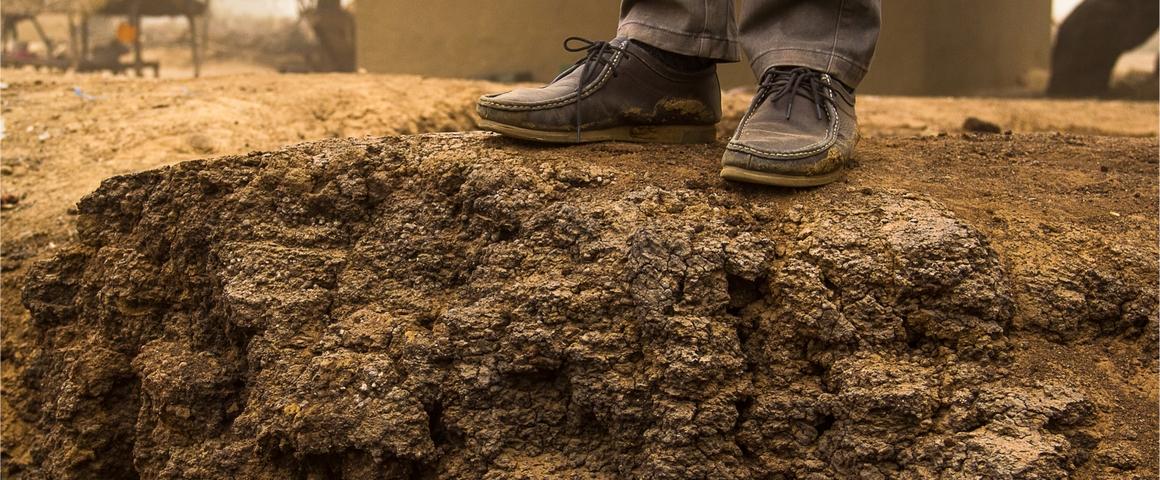Results & impact 10 October 2025
- Home
- Press area
- Press releases
- Global panorama of the impacts of human activities on soil carbon
Soil carbon: a global panorama of the impacts of human activities

According to the study, which compiled more than 50 farming practices, exogenous organic matter inputs and agroforestry are the most virtuous in terms of carbon storage in soils © R. Belmin, CIRAD
What are the effects of human activities on soil carbon (C) stocks? Eight scientists from CIRAD propose for the first time a quantified global panorama to answer this question. “We have conducted a second-order meta-analysis, which summarizes the existing meta-analyses, in order to compile the latest scientific knowledge in this field”, says Damien Beillouin, lead author of the study.
2400 billion tonnes of carbon stored in the world’s first two metres of soil depth
The team has published in Nature Communications a quantified summary of more than 230 meta-analyses, for a total of more than 25 000 research articles. This colossal undertaking covers a very wide range (more than 220) of human interventions that modify soil organic carbon stocks. It is essential to preserve these stocks in order to limit global warming: soils have already lost 116 billion tonnes of carbon, released into the atmosphere as a result of land use management.
Organic matter inputs and agroforestry: good practices to store carbon
The first finding: of more than 50 agricultural practices compiled, exogenous organic matter inputs and agroforestry are the most effective. Biochar inputs increase soil carbon stocks by 66%, and this gain stands at 20% for agroforestry and perennial crops. “The local context is essential to assess the effects and the feasibility of soil carbon storage options, and this study shows that promising avenues exist”, says Julien Demenois, co-author of the study and CIRAD’s correspondent for the 4 per 1000 Initiative. “These are valuable insights for the farmers, foresters, NGOs and companies involved in the 4 per 1000 Initiative.”
Another finding: these practices limit losses linked to land-use change. The conversion of forest lands to croplands results in an average loss of 32% of soil organic carbon if annual crops are planted there. But if these lands are cultivated under agroforestry or perennial crops, the losses linked to land conversion are lower: -12% and -6.7% respectively. The same buffer effects are observed during the conversion of grasslands to croplands. “However, there are far fewer studies on other practices that could also be interesting”, says Damien Beillouin. Julien Demenois adds: “Our study reveals knowledge gaps, and this could steer the research efforts and resources of the members of the 4 per 1000 Initiative”.
Preserving natural stocks
The results differ for forests and wetlands, which have high carbon stocks per hectare. Most human activities result in soil carbon loss. “Our meta-analysis confirms the importance of preserving natural carbon stocks, especially in forests, wetlands, and permanent grasslands”, says Damien Beillouin.
The last major finding: the effects of climate change on soil carbon stocks. “The direct effects of climate change (for example, an increase in temperature or changes in rainfall) result in soil carbon losses per hectare that are 7 to 10 times lower than land-use change, but are felt across all land surfaces”, says Damien Beillouin. However, the indirect effects of climate change, such as wildfires, result in substantial carbon losses per hectare.
“These findings are precious for the scientific community, and we are working to make them more accessible through an interactive platform that is updated in real time thanks to artificial intelligence, as part of the EU ORCaSa project”, says Damien Beillouin. Julien Demenois continues: “Ultimately, this tool will contribute to the research and innovation strategy of the International Research Consortium on soil carbon set up in the context of the ORCaSa project.”
Reference
Beillouin, D., Corbeels, M., Demenois, J., Berre, J., Boyer, A., Fallot, A., Feder, F., Cardinael, R., 2023. A Global Meta-analysis of Soil Organic Carbon in the Anthropocene. Nature Communications.
Other reference
Beillouin, D., Cardinael, R., Berre, D., Boyer, A., Corbeels, M., Fallot, A., Feder, F. and Demenois, J., 2022. A global overview of studies about land management, land‐use change, and climate change effects on soil organic carbon. Global Change Biology, 28(4), pp.1690-1702.



























